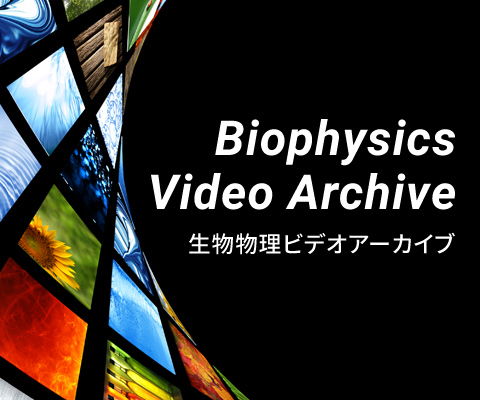男女共同参画学協会連絡会
支援企業による広告記事
- ソーラボジャパン株式会社
- サイエンティフィックカメラと周辺機器の同期
- 「生物物理」2023年10月号
- ソーラボジャパン株式会社
- 顕微鏡のリノベーション ~ 顕微鏡ポートを活用した光学系の導入
- 「生物物理」2022年12月号
- ソーラボジャパン株式会社
- ケージシステムや光学レールを使ってみよう
- 「生物物理」2021年10月号より
- ソーラボジャパン株式会社
- 多光子顕微鏡技術の最前線
- 「生物物理」2020年8月号より
Biophysics and Physicobiology論文賞
日本生物物理学会では、Biophysics and Physicobiologyに掲載された論文のうち、生物物理学並びにBiophysics and Physicobiology誌に貢献した功績に対し、「Biophysics and Physicobiology論文賞」を贈っています。
Biophysics and Physicobiology論文賞規定
第12回 Biophysics and Physicobiology 論文賞
会誌63巻1号および学会ウェブサイトにて会員の皆様にご推薦をお願いした第12回Biophysics and Physicobiology 論文賞(旧BIOPHYSICS 論文賞)受賞論文が決定いたしましたので,ここにお知らせします.
(1) Yumeka Yamauchi, Masae Konno, Shota Ito, Satoshi P. Tsunoda, Keiichi Inoue, Hideki Kandori
"Molecular properties of a DTD channelrhodopsin from Guillardia theta."
BPPB vol.14, pp.57-66 (2017)
(2) Shoji Takada
" Gō model revisited."
BPPB vol. 16, pp. 248-255 (2019)
【授賞理由】
(1) Yamauchi et al. Molecular properties of a DTD channelrhodopsin from Guillardia theta.
This article first reported the photochemical properties of a newly identified so-called “DTD rhodopsin” (GtCCR4), from cryptophyte algae, Guillardia theta. The authors discovered a remarkable fundamental property of GtCCR4; it functions as a light-gated cation channel (channelrhodopsin) although it shows high homology to the proton-pump bacteriorhodopsin. The article has been cited 29 times and there is no doubt that it will be cited exponentially more and more in the future because the article contributes to various fields, not only to biophysics as follows. Owing to its high activity, GtCCR4 is a promising optogenetics tool for the optical control of neuronal excitability. Furthermore, the discovery of GtCCR4 gave a significant impact on the medical application to a gene therapy for curing vision disorders. A new company called OiDE OptoEye, inc. was established to enhance the applicability of GtCCR4 to an innovatory gene therapy for patients with retinitis pigmentosa. In summary, the paper offers outstanding potentials of GtCCR4 for the developing basic science and its applications based on biophysics.
(2) Shoji Takada, Gō model revisited.
This review article starts from the introduction of the original Gō model, which was a lattice model and was first proposed in 1975 by Taketomi, Ueda and Go. Its theoretical essence is the consistency principle of protein native structures, where proteins individually take the optimal local interactions and nonlocal interactions, i.e., the tertiary structure. This dual optimality was attained via evolutionary selections of the amino acid sequence. Then, the author of this review article describes the following expansion: application to protein folding, free energy approaches, and the off-lattice Gō models, where the Gō model does not mean a single model, but a class of models having the two concepts: [1] the models represent folding-unfolding transitions, and [2] the models take into accounts pairwise contact energies only for pairs that are in contact in the native structure. Namely, the Gō model is a “structure-based model” with the energy function explicitly dependent on the native structure. Some evaluations of the off-lattice Gō models are introduced including the folding simulations for 10 proteins on Anton special purpose supercomputer, and the results well support the assumption behind the Gō model. Finally, recent expansions are also described: the multiple-basin Gō model for protein function simulations, and coarse grained models including RNA and DNA models. Publicly available tools for the Gō models are also introduced to people, who want to play the protein modeling and folding. Thus, it is an excellent review article, not only looking back at the long history but also prospecting the future development. This article has been cited by as many as 35 articles.
2023年6月
Biophysics and Physicobiology 論文賞選考委員会




